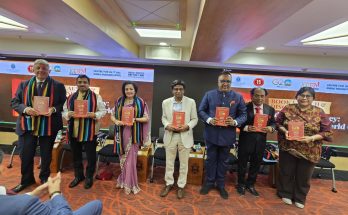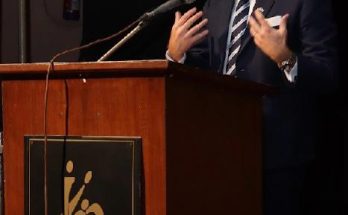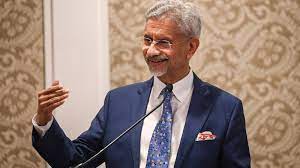 The Telangana districts of the erstwhile Hyderabad State have had a troubled history from the days of Nizam’s rule. The kisan agitation against the landlords, launched by the Communists, lasted till 1952 when it was called off on the diktat of Stalin himself. The agitation was led by gentlemen revolutionaries like Sundariah, Ravi Narayan Reddy and Maqdoom Hohiuddin, who was also a celebrated poet. This was followed by the Indian troops’ action in Hyderabad State in September 1948 to overcome the “razakars”, a locally organised communal force which vainly hoped to bring about the independence of Hyderabad State. After the action, civil and administrative officers were sent from Madras State to administer the districts of erstwhile Hyderabad State. After about a year there was an agitation against the deputationists and this was known as the Mulki agitation which led to the eventual repatriation of all deputationists.
The Telangana districts of the erstwhile Hyderabad State have had a troubled history from the days of Nizam’s rule. The kisan agitation against the landlords, launched by the Communists, lasted till 1952 when it was called off on the diktat of Stalin himself. The agitation was led by gentlemen revolutionaries like Sundariah, Ravi Narayan Reddy and Maqdoom Hohiuddin, who was also a celebrated poet. This was followed by the Indian troops’ action in Hyderabad State in September 1948 to overcome the “razakars”, a locally organised communal force which vainly hoped to bring about the independence of Hyderabad State. After the action, civil and administrative officers were sent from Madras State to administer the districts of erstwhile Hyderabad State. After about a year there was an agitation against the deputationists and this was known as the Mulki agitation which led to the eventual repatriation of all deputationists.
Around the same time, there was a strong agitation in the Telugu-speaking districts of the erstwhile Madras Presidency, demanding Andhra State. A self-effacing Gandhian, Potti Sriramulu, began a fast-unto-death in Vijayawada. Regrettably, no senior leader intervened. C. Rajagopalachary was the Chief Minister of Madras Presidency. Sriramulu’s death led to widespread agitations in the Telugu-speaking districts. Prime Minister Jawaharlal Nehru announced the formation of Andhra State consisting of the Telugu-speaking districts of Madras Presidency with Kurnool as its capital.
This revived the demand for Telangana State. The State Re-Organisation Commission of 1955 led by Fazl Ali opined that the considerations in favour of a separate Telangana were such that they could not be lightly brushed aside.
 Since Telangana was not conceded, an agitation for Telangana began and it assumed serious proportions in the 1960s under the leadership of Dr. Channa Reddy and his young deputy, Mallikarjun, who led a newly formed party called the Telangana Praja Samiti. The Samiti won most of the Telangana seats in the 1971 general election. While the Samiti merged with the Congress later, the demand for Telangana was never given up. The year 2009 saw a spurt in the Telangana agitation with K. Chandrasekhara Rao of the Telangana Rashtra Samiti leading the agitation. The Centre reacted with a statement promising to consider Telangana. This was followed by the appointment of a committee under Justice B.N. Srikrishna, who proposed various options. The committee felt that the demand for a separate Telangana was not entirely unjustified but the apprehensions of the people of the Andhra regions settled in Hyderabad should be taken care of.
Since Telangana was not conceded, an agitation for Telangana began and it assumed serious proportions in the 1960s under the leadership of Dr. Channa Reddy and his young deputy, Mallikarjun, who led a newly formed party called the Telangana Praja Samiti. The Samiti won most of the Telangana seats in the 1971 general election. While the Samiti merged with the Congress later, the demand for Telangana was never given up. The year 2009 saw a spurt in the Telangana agitation with K. Chandrasekhara Rao of the Telangana Rashtra Samiti leading the agitation. The Centre reacted with a statement promising to consider Telangana. This was followed by the appointment of a committee under Justice B.N. Srikrishna, who proposed various options. The committee felt that the demand for a separate Telangana was not entirely unjustified but the apprehensions of the people of the Andhra regions settled in Hyderabad should be taken care of.
The Srikrishna report came as a shock to the people of Telangana since their aspirations for a separate State were not upheld by him. Justice Srikrishna’s principal recommendation was that the status quo could be maintained with the Telangana region being given a constitutional guarantee of a Regional Council.
The developments in the districts after The death of Y S Rajashekar Reddy in a helicopter crash eclipsed the fortunes of the Congress party not only in Rayalaseema but also in Seemandhra. The emergence of his son, Jagan Reddy, as an active politician and spread of his influence over the Seemandhra districts also alarmed the Congress, which faced total elimination in Andhra Pradesh. It was, therefore, considered advisable to concede the demand for Telangana so that at least some of the 17 Lok Sabha seats of Telangana could be shared with K. Chandrasekhara Rao’s Telangana Rashtra Samiti.
The Telangana Bill was taken up eventually on February 18. The Bill had a very rough passage in the Lok Sabha with unprecedented scenes like one member spraying pepper in the House and members from the Seemandhra region resorting to unruly behaviour. Subsequently, the Bill was placed before the Rajya Sabha and after chaotic scenes it was passed on February 21, 2014.
The President’s approval to the bifurcation of Andhra Pradesh subsequently brought about the eventual arrival of Telangana as the 29th State of India. It would formally come into being on June 2, 2014.
However, the expectation of the Congress party that Chandrasekhara Rao would agree to merge his party with the Congress failed to materialise as Chandrasekhara Rao declared that his promise to merge his party with the Congress was on the expectation that Telangana would become a reality by September 2013. Since this did not happen and eventually emerged only in February 2014, there would be no merger of his party with the Congress.
There is no agreement even on the question of seat sharing. With Chandrasekhara Rao aspiring to become the Chief Minister of Telangana and not without justification, the emerging position is understandable. Since the Telangana Rashtra Samiti is likely to win most of the 17 Lok Sabha seats in the Telangana region on its own, its unwillingness to share the seats with the Congress party is also understandable. In the event of seat sharing with the Telangana Rashtra Samiti not materialising, the Congress party’s prospects in the coming Lok Sabha elections in the whole of Andhra Pradesh, including Telangana, are indeed bleak. There are some unconfirmed reports that the Telangana Rashtra Samiti is inclined to support the Third Front in the Lok Sabha elections. Since most political parties are likely to work out various poll alliances, the Telangana Rashtra Samiti’s possible preference for the Third Front holds no surprise.
There are some residuary problems such as the sharing of river waters, which originate or pass through the Telangana region, and the transfer of some villages from Khammam district in Telangana to the Seemandhra region for reasons not known.
In the aftermath of the passage of the Telangana Bill and Hyderabad city becoming the common capital for both Telangana and Seemandhra States for a period of ten years, Seemandhra State has been given special status with a financial package for a period of five years. The Governor of Andhra Pradesh has been given special responsibility for overseeing the law and order arrangements, which essentially means control over the Police Department, in both the States. After June 2, 2014, both Telangana and Seemandhra will have to work out their respective destinies.
(The writer is an Advisor to Observer Research Foundation, Delhi)
Courtesy: ORF
Author Profile
- India Writes Network (www.indiawrites.org) is an emerging think tank and a media-publishing company focused on international affairs & the India Story. Centre for Global India Insights is the research arm of India Writes Network. To subscribe to India and the World, write to editor@indiawrites.org. A venture of TGII Media Private Limited, a leading media, publishing and consultancy company, IWN has carved a niche for balanced and exhaustive reporting and analysis of international affairs. Eminent personalities, politicians, diplomats, authors, strategy gurus and news-makers have contributed to India Writes Network, as also “India and the World,” a magazine focused on global affairs.
Latest entries
 DiplomacyApril 23, 2024Resetting West Asia, re-booting the world, but not fast enough: T.S. Tirumurti
DiplomacyApril 23, 2024Resetting West Asia, re-booting the world, but not fast enough: T.S. Tirumurti India and the WorldApril 22, 2024India’s G20 Legacy: Mainstreaming Africa, Global South in global agenda
India and the WorldApril 22, 2024India’s G20 Legacy: Mainstreaming Africa, Global South in global agenda DiplomacyApril 10, 2024Diplomat-author Lakshmi Puri pitches for women power at LSR
DiplomacyApril 10, 2024Diplomat-author Lakshmi Puri pitches for women power at LSR India and the WorldApril 6, 2024UN envoy pitches to take India’s solutions to the world stage
India and the WorldApril 6, 2024UN envoy pitches to take India’s solutions to the world stage







